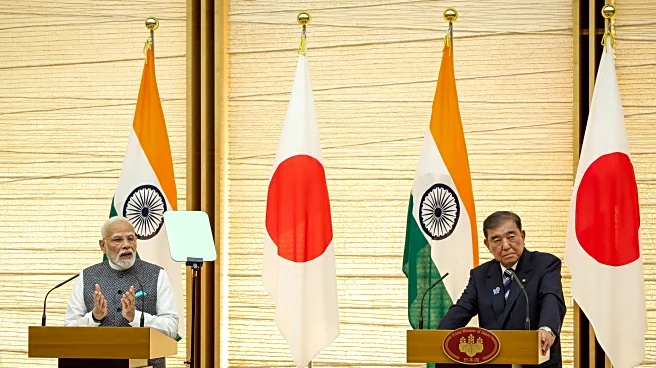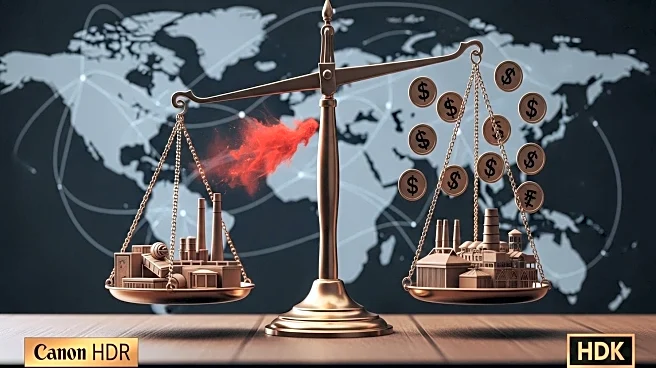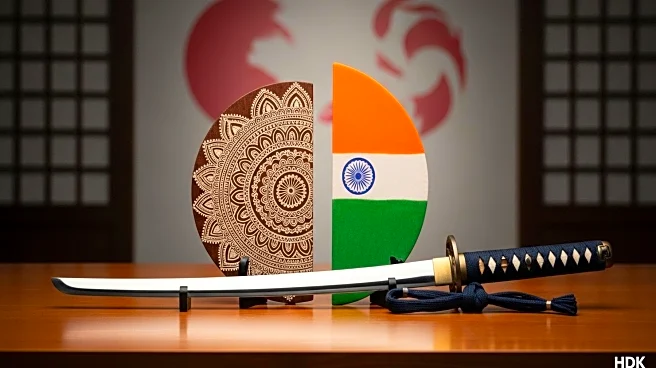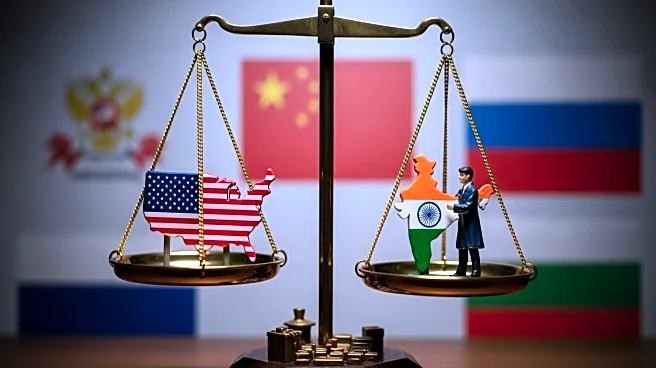What is the story about?
What's Happening?
The Indian government is grappling with the economic impact of a 50% tariff imposed by the United States. Despite projecting confidence, the government has initiated trade discussions with countries like China and Japan to mitigate the effects. The textile industry has been particularly hard hit, with exports falling by 30% and predictions of a 50% drop in the coming months. This has led to production cuts in key regions such as Kolkata and Tiruppur. The aqua sector is also suffering, with a sharp decline in demand for shrimp and a subsequent price crash. The seafood industry in Kerala is experiencing similar challenges, with significant price drops for cuttlefish and octopus. The tariff increase has also affected the diamond and jewelry sectors in Surat, where tariffs have risen from 2.1% to 52.1%.
Why It's Important?
The U.S. tariff hike poses a significant threat to India's economy, particularly its export-driven industries. The textile and seafood sectors, which are major contributors to India's GDP and employment, are facing severe disruptions. The tariff increase could lead to widespread job losses and economic instability if not addressed promptly. The Indian government's efforts to engage in trade talks with other nations highlight the urgency of finding alternative markets and reducing reliance on the U.S. However, such negotiations are complex and may not yield immediate results. The situation underscores the interconnectedness of global trade and the potential ripple effects of protectionist policies.
AI Generated Content
Do you find this article useful?















